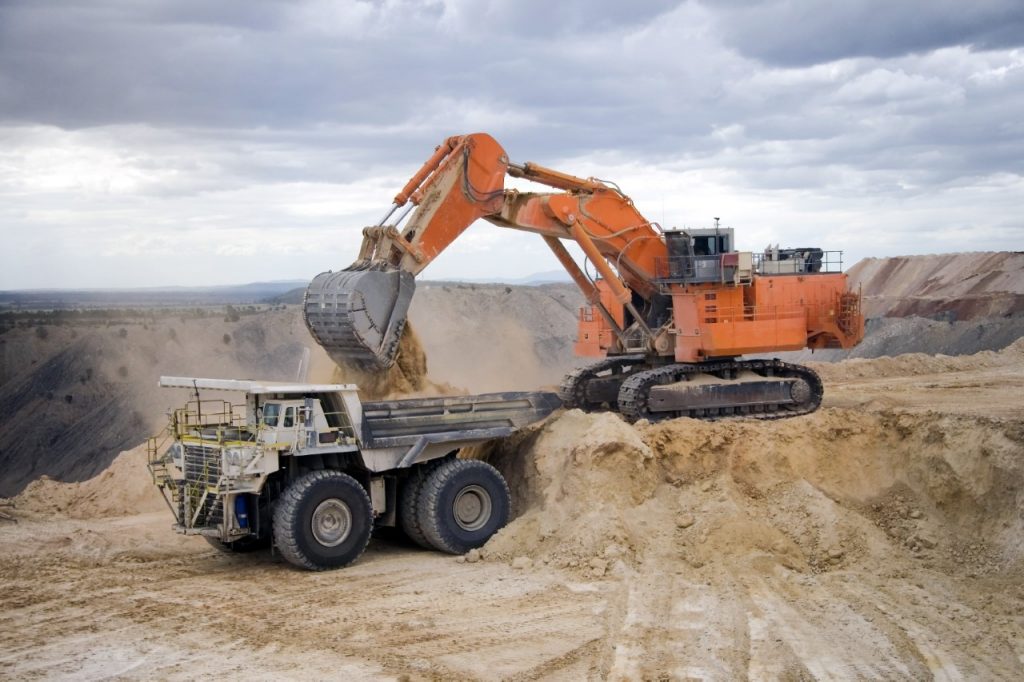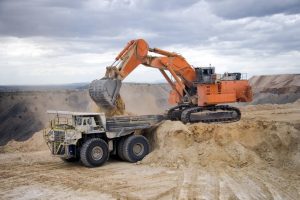LUBRICANTS: Protecting against over-lubrication
Lubricants have a crucial role to play in protecting mining shovels, with proper application practices just as important as selecting the right […]

Mining shovel

 Mining shovel[/caption]
Lubricants have a crucial role to play in protecting mining shovels, with proper application practices just as important as selecting the right oil. Each component requires the correct amount of lubricant to perform at optimum level, which can secure extended equipment life and reduce operating costs.
Over-lubrication is an issue that challenges mine operators and can be attributed to poor communication between shift changes, lack of reporting, or misinterpreting how the product should be applied. While it makes sense to think that more of a good thing is best, over-lubricating can cause mechanical issues because when shovel gears or sticks are over-lubricated the fluid can sag and drip, leaving the metals exposed to contact. The result is unexpected maintenance costs and increased downtime while repairs are undertaken.
While the impact of over-lubrication can be severe, paradoxically the measures needed to avoid it can be straightforward and easy to put in place. The good news is that these issues can be prevented in the field by focusing on proper application, enacting correct maintenance practices and minimizing workforce errors. Below are some techniques to consider when lubricating points on mining shovels.
Open gear lubrication
Typically, shovel open gears operate in strenuous environments like open pits and quarries which expose the equipment to extreme temperatures, as well as abrasive dust, dirt, water, and introduce the possibility of corrosion. These conditions add to the difficulty of achieving optimal lubrication. While many of these factors are out of a maintenance manager’s control, the quantity of lubricant applied to an open gear is manageable and can mitigate wear caused by exposure.
To gauge optimum lubricant quantity, mine operators must understand the product they are working with. Petro-Canada Lubricant’s VULTREX line of grease-based Open Gear Lubricants (OGL) generally enables users to apply less compared to other products.
Operators should be trained to look for key indicators of a properly applied lubricant. For example, when properly applied, the tooth face of the gear will show a small film of lubricant which appears black or dark grey and velvety in appearance. Conversely when over-applied, it can ‘wash itself off’, making it actually difficult to see the film left on the surface.
These recommendations apply year-round, but there are seasonal considerations to keep in mind. In colder climates, additional lubricant needs to be applied to keep the protective film workable on metal surfaces, while warmer conditions require less product to reduce the level of ‘fling-off’ and messy, lubricant consumption.
Shovel stick lubrication
Shovel sticks have similar lubricant demands as open gears. In cases of over-lubrication, the plating effect is reduced on the metal running surfaces. This results in the stick surface being more susceptible to extreme weather conditions. When properly lubricated, a stick should have minimal lubricant build-up towards the bucket and on non-running surfaces, which enables better resistance to adverse weather conditions.
Roller and rail lubrication
House rollers and rails also have similar lubricant application practices. A stubborn, black velvety film will be created when the correct amount of lubricant is used. In colder conditions, it is not necessary to apply more lubricant or pour oil onto the rollers. As the lubricant is oil-based, it will not dry out or freeze, making the equipment quieter.
It may be a common issue, but over-lubrication is an easy problem to be avoided. The key is to ensure all maintenance personnel and operators are trained in proper lubrication techniques and that application doesn’t become a secondary consideration to choosing the right oil.
If these two strands of good lubricant practice are in place, operators can enjoy extended equipment uptime, reduced maintenance costs and security of operational goals.
Ron Reiniger provides technical services expertise for Petro-Canada Lubricants mining customers across Canada and the US. With 22 years of experience in the industry, Ron is a valuable resource for Petro-Canada Lubricants customers. He is currently responsible for conducting lubricant audits for nearly 85 shovels (Cat 7495s, P&H 2800 and 4100 electric rope shovels, and hydraulic mining shovels). He is based in Kamloops, BC.
Mining shovel[/caption]
Lubricants have a crucial role to play in protecting mining shovels, with proper application practices just as important as selecting the right oil. Each component requires the correct amount of lubricant to perform at optimum level, which can secure extended equipment life and reduce operating costs.
Over-lubrication is an issue that challenges mine operators and can be attributed to poor communication between shift changes, lack of reporting, or misinterpreting how the product should be applied. While it makes sense to think that more of a good thing is best, over-lubricating can cause mechanical issues because when shovel gears or sticks are over-lubricated the fluid can sag and drip, leaving the metals exposed to contact. The result is unexpected maintenance costs and increased downtime while repairs are undertaken.
While the impact of over-lubrication can be severe, paradoxically the measures needed to avoid it can be straightforward and easy to put in place. The good news is that these issues can be prevented in the field by focusing on proper application, enacting correct maintenance practices and minimizing workforce errors. Below are some techniques to consider when lubricating points on mining shovels.
Open gear lubrication
Typically, shovel open gears operate in strenuous environments like open pits and quarries which expose the equipment to extreme temperatures, as well as abrasive dust, dirt, water, and introduce the possibility of corrosion. These conditions add to the difficulty of achieving optimal lubrication. While many of these factors are out of a maintenance manager’s control, the quantity of lubricant applied to an open gear is manageable and can mitigate wear caused by exposure.
To gauge optimum lubricant quantity, mine operators must understand the product they are working with. Petro-Canada Lubricant’s VULTREX line of grease-based Open Gear Lubricants (OGL) generally enables users to apply less compared to other products.
Operators should be trained to look for key indicators of a properly applied lubricant. For example, when properly applied, the tooth face of the gear will show a small film of lubricant which appears black or dark grey and velvety in appearance. Conversely when over-applied, it can ‘wash itself off’, making it actually difficult to see the film left on the surface.
These recommendations apply year-round, but there are seasonal considerations to keep in mind. In colder climates, additional lubricant needs to be applied to keep the protective film workable on metal surfaces, while warmer conditions require less product to reduce the level of ‘fling-off’ and messy, lubricant consumption.
Shovel stick lubrication
Shovel sticks have similar lubricant demands as open gears. In cases of over-lubrication, the plating effect is reduced on the metal running surfaces. This results in the stick surface being more susceptible to extreme weather conditions. When properly lubricated, a stick should have minimal lubricant build-up towards the bucket and on non-running surfaces, which enables better resistance to adverse weather conditions.
Roller and rail lubrication
House rollers and rails also have similar lubricant application practices. A stubborn, black velvety film will be created when the correct amount of lubricant is used. In colder conditions, it is not necessary to apply more lubricant or pour oil onto the rollers. As the lubricant is oil-based, it will not dry out or freeze, making the equipment quieter.
It may be a common issue, but over-lubrication is an easy problem to be avoided. The key is to ensure all maintenance personnel and operators are trained in proper lubrication techniques and that application doesn’t become a secondary consideration to choosing the right oil.
If these two strands of good lubricant practice are in place, operators can enjoy extended equipment uptime, reduced maintenance costs and security of operational goals.
Ron Reiniger provides technical services expertise for Petro-Canada Lubricants mining customers across Canada and the US. With 22 years of experience in the industry, Ron is a valuable resource for Petro-Canada Lubricants customers. He is currently responsible for conducting lubricant audits for nearly 85 shovels (Cat 7495s, P&H 2800 and 4100 electric rope shovels, and hydraulic mining shovels). He is based in Kamloops, BC.
2 Comments
Chris
Interesting that this was an ad for Petro Canada. We’ve had nothing but problems with their solid lubes in our shovels. Squeezing out and washing out especially on our larger 8000’s.
Michael Williams
Very nice and useful article for the people looking to understand lubrication best practices. we need to make sure that industrial and heavy machinery both are following proper lubrication programs to prevent over lubrication issues which sometimes can cause machine or engine failure. Note down the condition of oil and filter or topup new oil when needed!